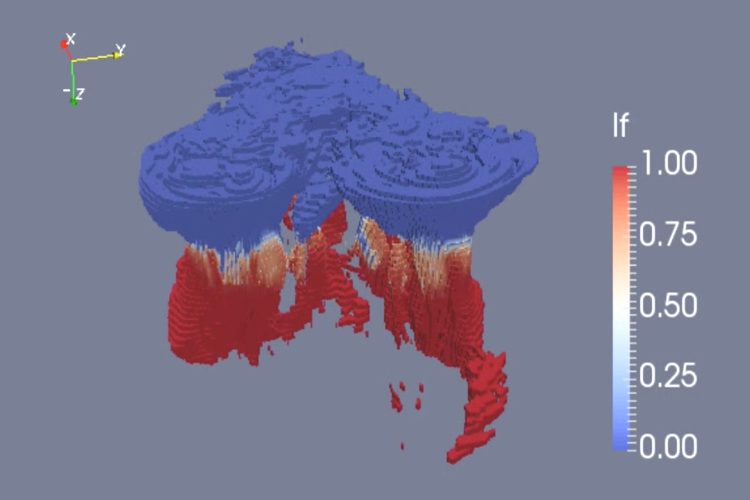Cloud water and ice: what satellites miss
How much liquid water and ice a cloud contains determines how much it rains and how it reflects the sunlight. Glaciation of a cloud is often triggered by dust and other particles, including possible influences by man-made pollution. Therefore satellite data are often used for the analysis of the liquid water and ice content of clouds, for example in the ERC Starting Grant Project C2Phase (“Closure of the Cloud Phase”) led by Corinna Hoose. However, we could now show with the help of high resolution models of convective clouds that satellite give a biased picture: For the same temperature, the cloud top always contains less liquid water as the inner regions of the cloud, because the water evaporates faster at the cloud top. Therefore, the liquid-ice phase partitioning is systematically shifted to higher temperatures at the cloud top. At the same time, the simulations show that microphysical processes, acting on very small scales, leave a fingerprint in the cloud top phase distribution. For instance, the glaciation temperature is shifted by up to 10°C, when more ice active dust particles are present, and the splintering of frozen droplets causes ice fractions of up to 10% at -10°C. But if the resolution is too coarse – more than 1 km, which is similar to many satellite data sets, the signal of these fingerprints becomes very weak or disappears. Future analyses of the distribution of cloud water and ice with satellite data should consider these limitations. With the combination of model simulations and observations, we can now provide more detailed interpretations of the liquid-ice phase partitioning in convective clouds.
Further Information:
Hoose, C., Karrer, M., & Barthlott, C. (2018). Cloud top phase distributions of simulated deep convective clouds. Journal of Geophysical Research: Atmospheres, 123, https://doi.org/10.1029/2018JD028381.
[Working group: Cloud Physics]

